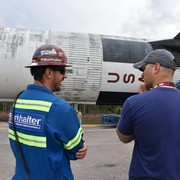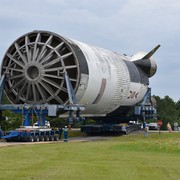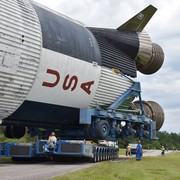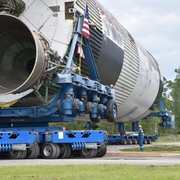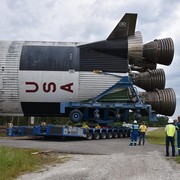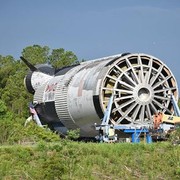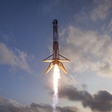
The Saturn V Rocket that was supposed to launch Apollo 19 to the Moon in 1973 has found a new home.
NASA's Last Apollo Saturn V Rocket was moved along a canal from its home at NASA's Michoud Assembly Facility in New Orleans and 40 miles down the Pearl River to NASA's Stennis Space Center in Mississippi.
The move is the first phase of a multi-phase project to relocate, restore and display the booster in an effort to tell the Apollo story, including Mississippi's role in the space program, from start to finish. The center has recently partnered with Black Diamond Construction, LLC, locally-based out of Kiln, Ms, for the transport of the booster.
"There's a saying that if you wanted to get to the moon, you had to go through south Mississippi first," said John Wilson, executive director for INFINITY Science Center. "Our goal with this Saturn V first stage exhibit is to educate our guests on our region's critical role in space exploration and bring to life the ingenuity of the men and women who built, transported, tested and flew the machines that took us to worlds beyond our own."
The Saturn V was a three-stage American rocket used by NASA to support the Apollo program and later Skylab, the first American space station. The first stage, known as the S-IC, is 138 feet long and 33 feet in diameter. The stage could produce more than 7.5 million pounds of thrust from five massive F-1 engines, four mounted on a steerable outer ring and a fifth engine rigidly fastened in the center. The liquid oxygen and kerosene combined and burned in the engines for 2.5 minutes, then, at an altitude of about 38 miles, the empty stage separated from the rest of the assenting rocket and burned up as it returned to Earth.
Between December 1968 and December 1972, nine manned missions to the moon took place. By 1975, NASA had cancelled the program, with three Apollo missions never having left the ground. This booster, which was intended for the cancelled Apollo 19 mission, has been kept in outside storage for more than 45 years. Funding for the move, the first phase of the project, was provided in part by the state of Mississippi, which will cover the minimum costs to move the booster, however additional funds will continue to be raised to build a permanent exhibit space at INFINITY along I-10 where the booster will be placed.
.
